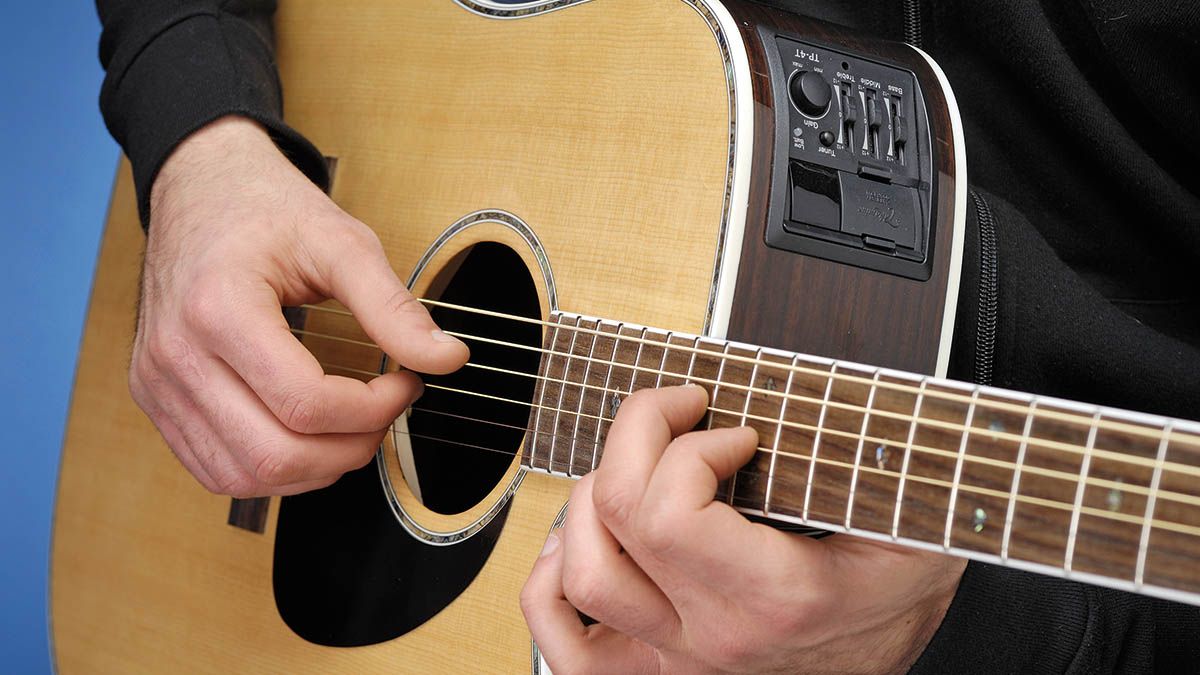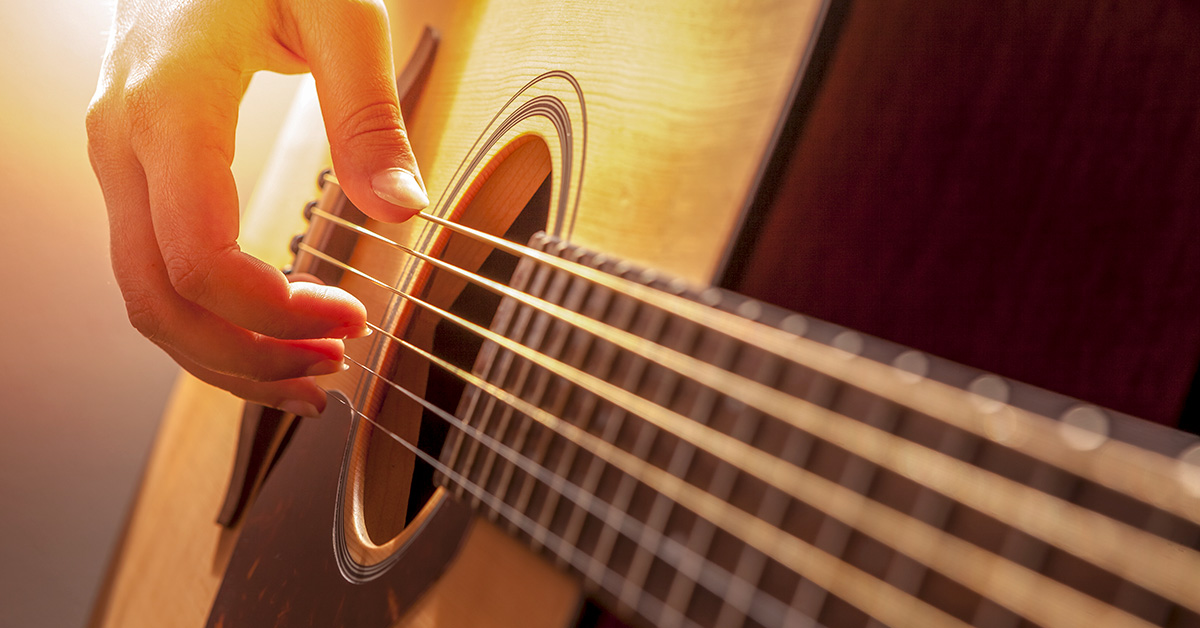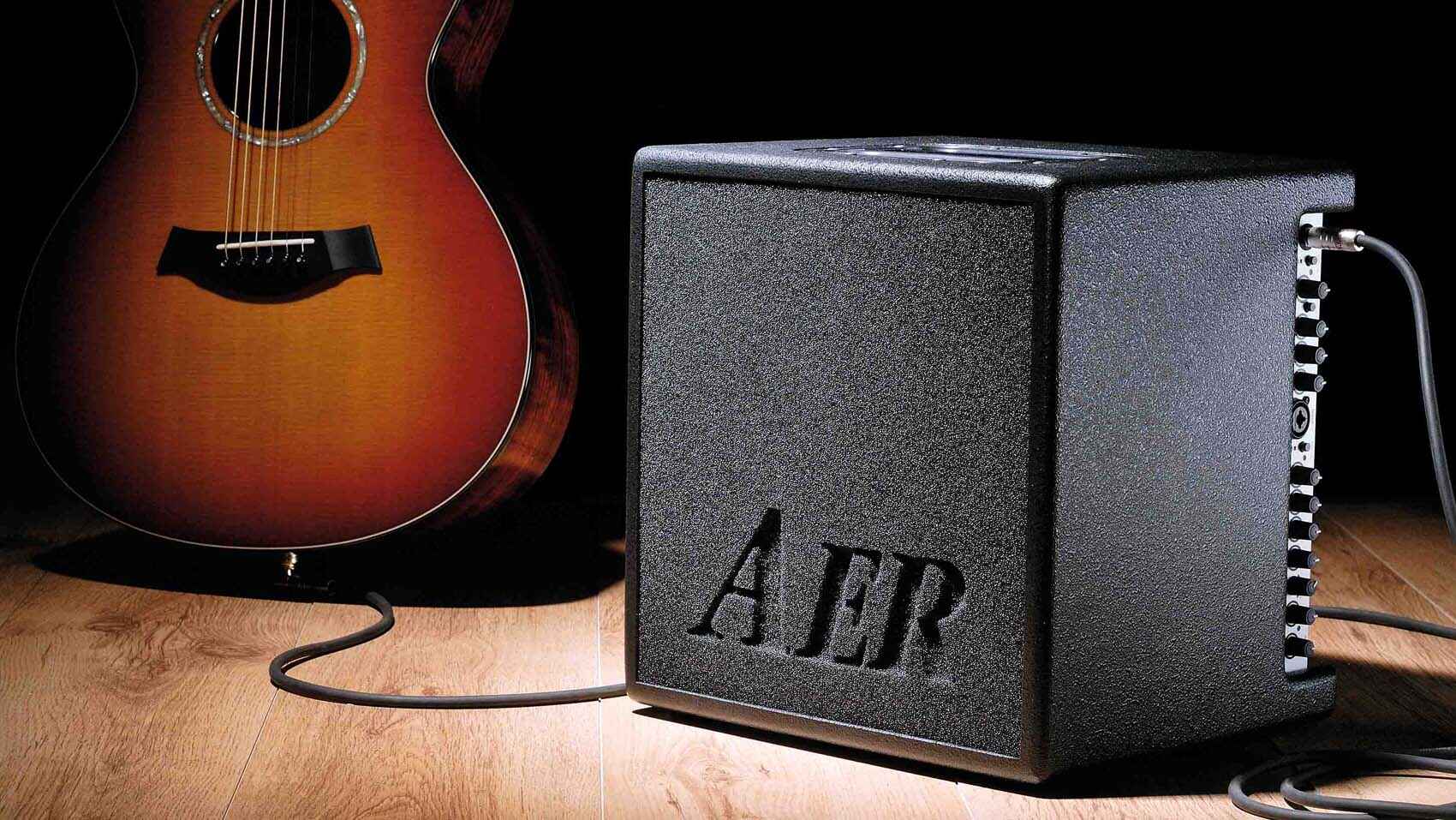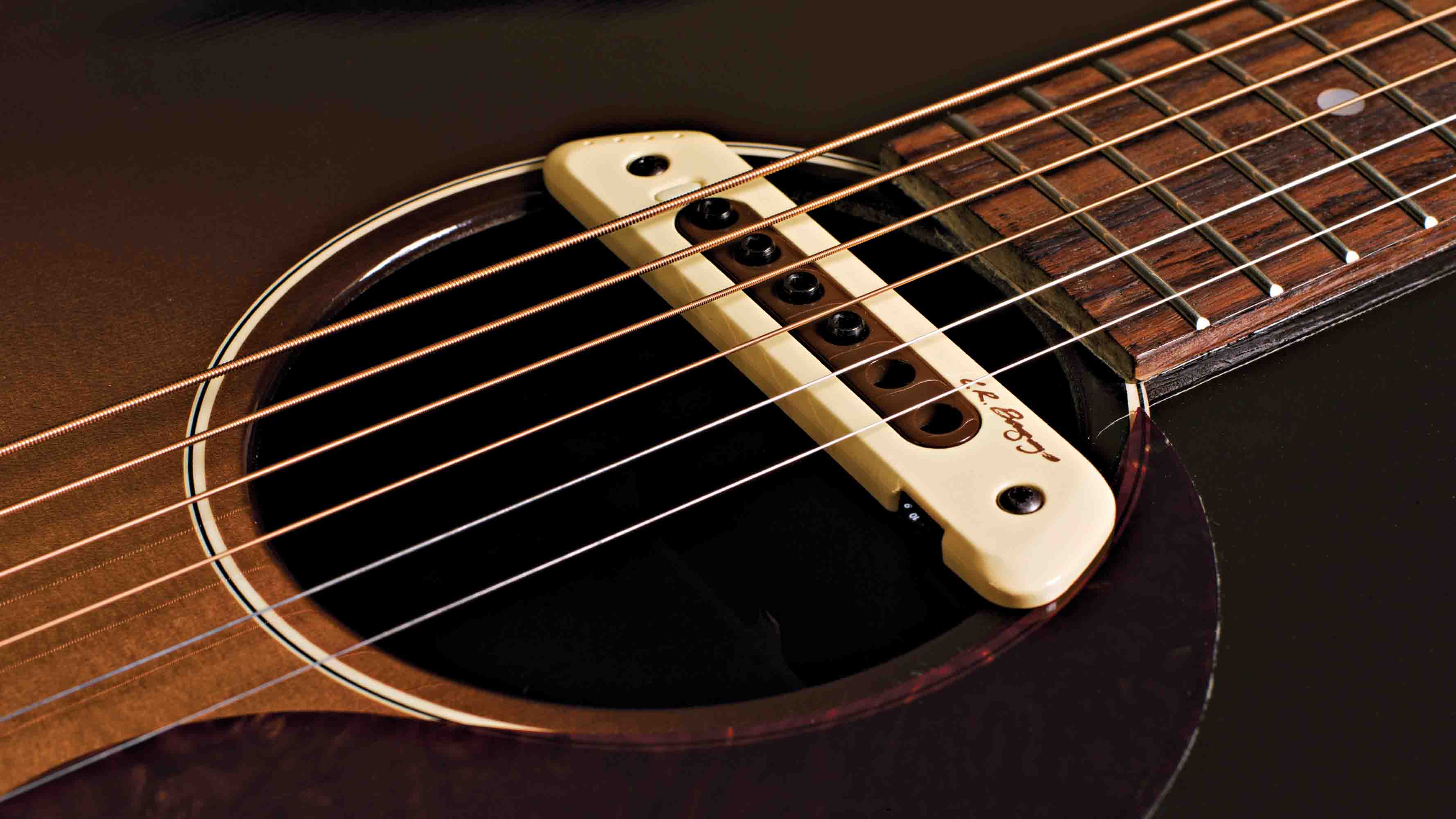Introduction
Playing the acoustic guitar can be a fulfilling and melodious experience, but it often comes with a common challenge: string noise. Whether it’s the unwanted squeaks and scratches that occur when shifting positions or the excessive buzzing that can hinder the clarity of your playing, string noise can be frustrating for players of all skill levels. However, there are several techniques and strategies that can help you reduce and manage string noise on your acoustic guitar.
In this article, we will explore various methods to minimize string noise, regardless of whether you’re a beginner or an experienced guitarist. By following these tips, you’ll be able to achieve a cleaner and more polished sound, allowing your music to resonate with greater clarity.
Understanding the causes of string noise is the first step in addressing the issue. From there, we will delve into practical solutions that can be implemented on your acoustic guitar. We’ll also discuss the importance of choosing the right strings, proper finger placement, utilizing fingerstyle techniques, and using a lighter touch when playing. Additionally, we’ll explore the use of string dampeners, lubricants or powders, and regular maintenance to keep your guitar in optimal playing condition.
So, if you’re tired of hearing unwanted string noise every time you play your acoustic guitar, fret not! By following the advice and techniques presented in this article, you’ll be able to reduce the string noise and enjoy a more enjoyable and immersive playing experience. Let’s dive in!
Understanding String Noise on Acoustic Guitar
As guitarists, we’re no strangers to the various sounds our instrument produces. While some of these sounds are desirable and contribute to the overall character of the music, string noise is an unwelcome side effect that can disrupt the clarity and quality of our playing.
String noise on an acoustic guitar often occurs when the strings come into contact with various parts of the instrument, such as the frets, the bridge, or even the player’s hands. This contact creates friction, resulting in squeaks, scratches, or buzzing sounds that can be heard during chord changes, string bends, or even simple finger movements.
One of the primary culprits of string noise is improper finger placement. When pressing down on the strings, it’s crucial to ensure that you’re placing your fingers right behind the fret, exerting enough pressure to produce a clean note without creating unnecessary noise. Avoid laying your fingers too flat or too far from the fret, as this can cause the strings to vibrate against the frets, leading to buzzing noises.
Another factor that contributes to string noise is the use of heavy-gauge strings. While heavier strings may provide a richer tone, they also require more force to play, increasing the likelihood of unintentional string vibrations and resulting noise. Consider experimenting with lighter gauge strings to reduce the overall tension and minimize string noise.
Fingerstyle guitarists may also experience excessive string noise, particularly when picking or plucking individual strings. The nature of fingerstyle playing involves intricate finger movements across multiple strings, making it essential to develop a technique that minimizes contact with unwanted strings. Focus on isolating the string you intend to play, using the thumb or other fingers to lightly touch the unused strings and prevent them from vibrating and causing additional noise.
Lastly, the intensity of your playing can also contribute to string noise. If you apply excessive force or have a heavy-handed approach, the strings may inadvertently collide with the frets, resulting in noise. Practice playing with a lighter touch, allowing the strings to vibrate freely without the interference of excessive pressure.
A solid understanding of the factors behind string noise is crucial for effectively addressing and reducing it. By being mindful of proper finger placement, experimenting with lighter gauge strings, utilizing fingerstyle techniques, and developing a lighter touch, you’ll be on your way to achieving a cleaner, more refined sound on your acoustic guitar.
Choosing the Right Strings
When it comes to minimizing string noise on your acoustic guitar, selecting the right strings can make a significant difference in achieving a cleaner and more controlled sound. The type of strings you choose can impact both the playability and the overall tone of your instrument.
The first consideration when choosing strings is the gauge or thickness. Lighter gauge strings generally require less force to fret, reducing the likelihood of unintentional string vibrations and resulting noise. They also tend to produce a brighter and more responsive tone. On the other hand, heavier gauge strings offer more sustain and a fuller, warmer sound but require a firmer touch to play. Finding the right balance between playability and tone is crucial.
Furthermore, the material from which the strings are made can also influence the string noise. Bronze and phosphor bronze strings are popular choices for acoustic guitars and are known for their bright and vibrant tones. However, they may produce more finger noise due to their relatively rough surface. If string noise is a primary concern, you might consider trying coated or polymer-coated strings. These strings have a smoother surface that reduces friction and minimizes string noise.
It’s important to note that finding the ideal strings for your playing style and preferences may require some experimentation. Each guitarist has unique preferences and techniques, so what works for one person may not work for another. Don’t be afraid to try different brands, gauges, and materials to find the perfect balance between playability, tone, and reducing string noise.
Lastly, keep in mind that as you change strings, it’s essential to properly clean and condition the fretboard. Over time, dirt, sweat, and residue can accumulate on the fretboard, affecting the string’s ability to vibrate freely. Regularly cleaning the fretboard with a suitable guitar cleaner or lemon oil can help maintain optimal string-to-fret contact and prevent unnecessary string noise.
By choosing the right strings for your acoustic guitar, considering factors such as gauge, material, and regular maintenance, you can significantly reduce string noise and enhance the overall playability and tone of your instrument.
Proper Finger Placement
When it comes to playing the acoustic guitar, proper finger placement is crucial not only for producing clean and accurate notes but also for reducing string noise. How you position your fingers on the fretboard can greatly impact the clarity and smoothness of your playing.
The first aspect of proper finger placement is ensuring that your fingers are positioned right behind the fret. Placing your fingers too far behind the fret can cause the strings to buzz against the metal frets, resulting in unwanted noise. On the other hand, pressing too close to the fret can cause the strings to go sharp, distorting the pitch. Therefore, it’s important to find the ideal balance by placing your fingers just behind the fret, allowing for clean and precise notes.
Additionally, pay attention to the angle and pressure of your fingers on the strings. Pressing the strings too hard can unnecessarily increase the tension, causing them to vibrate against the frets and create string noise. Instead, aim for a light and controlled touch. Applying just enough pressure to properly fret the strings without exerting excessive force will help minimize string noise and allow for smoother transitions between chords and notes.
Another important factor in proper finger placement is to avoid laying your fingers flat across the strings. This can result in unintentionally muting adjacent strings or causing them to vibrate against each other, which can lead to unwanted noise. Instead, try to have your fingers arched and placed on the fingertips, allowing for clean and clear notes and chords.
Furthermore, pay attention to the placement of your thumb behind the guitar neck. The thumb should be positioned roughly in the middle of the back of the neck, providing support and stability for your fingers. Avoid placing your thumb too high or too low on the neck, as this can hinder your ability to reach the strings and create unnecessary tension in your hand.
Developing proper finger placement takes time and practice. It’s important to be mindful of your hand and finger positioning as you play and make any necessary adjustments to ensure a clean and noise-free sound. By mastering proper finger placement, you’ll not only reduce string noise but also improve your overall playing technique and precision on the acoustic guitar.
Utilizing Fingerstyle Techniques
Fingerstyle guitar playing involves plucking individual strings with the fingers rather than using a pick. This technique can produce beautiful melodies and complex arrangements, but it can also lead to increased string noise if not executed properly. By utilizing specific fingerstyle techniques, you can minimize string noise and achieve a cleaner and more articulate sound on your acoustic guitar.
One important technique to reduce string noise is to anchor your picking hand or palm on the guitar’s bridge or body. This anchoring helps stabilize your hand and prevents unnecessary movement that can cause unwanted string vibrations. Experiment with different points of contact on the bridge or body to find the most comfortable position that provides stability and control while still allowing you to pluck the strings effortlessly.
Another technique to consider is palm muting. By lightly resting the edge of your picking hand’s palm on the strings close to the bridge, you can dampen the vibrations and reduce string noise. This technique is particularly useful when playing percussive or rhythmic fingerstyle patterns, allowing you to achieve a tight and controlled sound.
Fingerstyle players often use a combination of the thumb, index, middle, and ring fingers to pluck the strings. To minimize string noise, it’s beneficial to focus on precise finger movements and avoid unnecessary contact with adjacent strings. Practice isolating each finger’s movement and aim for clean and deliberate plucking of individual strings.
Moreover, you can incorporate techniques such as finger rolling and string skipping to enhance your fingerstyle playing while reducing string noise. Finger rolling involves rolling your finger from one string to another while maintaining contact with the previous string, reducing unwanted noise caused by lifting the finger completely off the string. String skipping involves skipping over certain strings when playing melodies or arpeggios, allowing you to avoid unnecessary string noise and achieve a more focused and defined sound.
Remember, mastering fingerstyle techniques takes time and practice. Start by learning simple fingerstyle patterns and gradually increase the complexity as you become more comfortable. Focus on precision, control, and minimizing unnecessary movements to achieve a clean and expressive fingerstyle sound.
By using these fingerstyle techniques, you can significantly reduce string noise and elevate your acoustic guitar playing to new heights. Embrace the versatility and beauty of fingerstyle playing while maintaining a clear and articulate sound.
Using a Lighter Touch
When it comes to reducing string noise on your acoustic guitar, one of the most effective strategies is to develop a lighter touch while playing. Applying excessive pressure and having a heavy-handed approach can lead to unwanted string vibrations and, consequently, increased string noise.
By consciously focusing on using a lighter touch, you allow the strings to vibrate more freely and reduce the chances of them colliding with the frets or other parts of the guitar that can cause noise. Lightening your touch will not only minimize string noise but also give your playing a smoother and more nuanced sound.
Start by analyzing your playing technique and being aware of the amount of pressure you exert on the strings. Often, guitarists instinctively press too hard, thinking that more force will result in a better sound. However, it’s essential to strike a balance and find the right amount of pressure required to produce clean and resonant notes without unnecessary tension.
When playing chords, focus on using only the necessary force to fret the strings and avoid squeezing too tightly. Experiment with finding the point where you can maintain clarity in your chords while exerting minimal pressure. You may find that you can achieve a cleaner sound with less effort than you originally thought.
Another aspect to consider is the release of pressure after playing a note or chord. Often, guitarists unintentionally continue to press down on the strings longer than necessary, which can cause them to vibrate against the frets and create noise. Practice releasing the pressure immediately after each note or chord, allowing the strings to ring freely without any unnecessary interference.
Developing a lighter touch requires practice and patience. Start by practicing scales or simple melodies, focusing on maintaining a light and relaxed grip on the guitar neck. Gradually apply this approach to more complex pieces and chord progressions while consciously monitoring your finger pressure.
Additionally, pay attention to your strumming or picking hand. Avoid striking the strings with excessive force or digging your pick too deeply into the strings. Strive for a gentle and controlled attack, allowing the strings to resonate naturally without abrupt and harsh contact.
By using a lighter touch, you can significantly reduce string noise and create a more expressive and balanced sound on your acoustic guitar. Embrace the finesse and control that comes with a light touch, and you’ll notice a noticeable improvement in the overall quality and clarity of your playing.
Adjusting Your Playing Technique
When it comes to minimizing string noise on your acoustic guitar, sometimes the solution lies in adjusting your playing technique. By making subtle changes to your approach, you can greatly reduce unwanted string noise and improve the overall quality of your sound.
One technique to consider is the angle of your fingers as they press down on the strings. Experiment with different finger angles to find the position that allows for clean fretting without causing unnecessary string vibrations. Often, angling your fingers slightly towards the headstock can help prevent the strings from buzzing against the frets during chord changes or rapid finger movements.
Another aspect to examine is the clarity of your fretting. When transitioning between chords or playing intricate melodies, it’s essential to ensure that each finger is pressing down on the appropriate string and fret with precision. Take the time to analyze your finger placement and make adjustments as needed to achieve a clean and accurate sound without any unintentional string noise.
Additionally, be mindful of the amount of pressure you apply to the strings. It’s easy to get carried away and squeeze the strings too tightly while strumming or plucking. By consciously using only the necessary force to produce a clear sound, you can minimize string vibrations and reduce noise. Practice playing with a relaxed grip, allowing the strings to resonate freely without any excess tension.
Strumming technique also plays a significant role in controlling string noise. Pay attention to the angle, strength, and speed of your strumming hand. Striking the strings at a slightly steeper angle can prevent unnecessary contact with adjacent strings and reduce the likelihood of string noise. Additionally, focusing on a consistent and controlled strumming motion can help achieve a more even sound and minimize any accidental scraping or scratching of the strings.
Recording your playing can be a helpful tool in identifying areas where your technique may need adjustment. Listen back to your recordings and pay attention to any excessive string noise or inconsistencies in your playing. This will allow you to pinpoint specific moments where adjustments need to be made and provide a clear starting point for refining your technique.
Remember, adjusting your playing technique takes time and practice. Be patient with yourself as you make these changes and focus on maintaining a relaxed and focused approach to your playing. With consistency and mindful adjustments, you’ll be able to significantly minimize string noise and improve the overall clarity and quality of your sound on the acoustic guitar.
Using String Dampeners
String dampeners are accessories that can be incredibly useful in reducing string noise on your acoustic guitar. These dampeners are typically placed on the strings near the bridge or neck to prevent unwanted string vibrations, resulting in a cleaner and more controlled sound.
One type of string damper is a fret wrap or muting wrap. It’s a strap-like accessory that wraps around the neck of the guitar and lightly touches the strings, damping their vibrations. Fret wraps are particularly effective for reducing string noise during high-gain playing or when using techniques such as tapping, sliding, or aggressive palm muting.
Another option is a string dampening device that attaches to the bridge of the guitar. These devices typically consist of small foam or rubber pieces that can be easily positioned to rest lightly against the strings. They dampen the vibrations and reduce string noise, especially when playing percussive or aggressive fingerstyle techniques.
String dampeners are designed to be adjustable, allowing you to control the level of dampening. You can experiment with different positions and tensions to find the right balance between reducing string noise and maintaining the desired sustain and tone.
It’s important to note that while string dampeners can effectively reduce string noise, they may also affect the overall tone and sustain of your guitar. Therefore, it’s recommended to use them primarily during recording or live performance situations where string noise is a significant concern.
If you don’t have access to specific string dampeners, there are alternative DIY options. For example, you can use a hairband or a small piece of cloth to gently lay across the strings near the bridge or nut to achieve a similar dampening effect. While these alternatives may not be as adjustable or secure as purpose-made dampeners, they can still help reduce string noise to some extent.
Ultimately, the use of string dampeners is a personal preference. Some guitarists prefer the natural sound and sustain of their instrument, while others prioritize minimizing string noise. If you find that string noise is hindering your playing or causing frustration, exploring the use of string dampeners can be a beneficial solution.
Remember to experiment with different types of dampeners and find the one that suits your playing style and preferences. With proper placement and adjustment, string dampeners can be a valuable tool in minimizing string noise and achieving a cleaner and more controlled sound on your acoustic guitar.
Applying Lubricants or Powders
When it comes to reducing string noise on your acoustic guitar, applying lubricants or powders to the strings and other contact points can be an effective solution. These substances help reduce friction between the strings, the fretboard, and other components, resulting in smoother string movement and decreased string noise.
One common lubricant used by guitarists is graphite. Graphite is often applied to the contact points between the strings and the nut or bridge saddles. It helps to create a slick surface, reducing friction and preventing the strings from getting stuck or binding. You can find graphite in various forms, such as powdered graphite or pencil lead, which can be applied with a soft cloth or by rubbing a pencil along the contact points.
Another lubricant option is silicone-based lubricants, which can be applied to the strings and the nut slots. These lubricants create a thin film that reduces the friction between the strings and the nut, allowing for smoother string movement and a decrease in string noise. Be cautious when applying silicone-based lubricants to avoid getting any on the fretboard, as it can make the surface slippery and affect your playing.
In addition to lubricants, some guitarists find success in using powders such as talcum powder or baby powder. These powders can be lightly applied to the strings, especially on the contact points near the nut and bridge, to reduce friction and minimize string noise. Be sure to wipe off any excess powder before playing to avoid buildup or potential damage to the guitar’s finish.
It’s worth noting that while lubricants and powders can help reduce string noise, they may also slightly alter the tone and sustain of your guitar. Therefore, it’s important to use them sparingly and judiciously, only when excessive string noise is a concern.
Before applying any lubricant or powder to your guitar, it’s advisable to consult the manufacturer’s recommendations or seek advice from a qualified guitar technician. They can provide guidance on the best lubricant or powder to use for your specific guitar and assist with proper application techniques.
Remember to regularly clean your guitar strings and fretboard to maintain optimal performance. Over time, dirt, oil, and sweat can accumulate on the strings and fretboard, affecting the string’s ability to vibrate freely and potentially increasing string noise. Use a soft cloth or specialized string cleaner to wipe down the strings after playing and periodically clean the fretboard to keep it clean and smooth.
By applying lubricants or powders to the appropriate areas, you can minimize friction, reduce string noise, and achieve a smoother playing experience on your acoustic guitar.
Performing Regular Maintenance on Your Guitar
To keep string noise to a minimum and ensure optimal performance, it’s crucial to perform regular maintenance on your acoustic guitar. By taking care of your instrument and addressing any issues promptly, you can reduce unwanted string noise and maintain a clean and smooth sound.
One important aspect of guitar maintenance is keeping the strings clean and replacing them when they become worn or corroded. Over time, dirt, sweat, and oils from your fingers can accumulate on the strings, impacting their tone and playability. Regularly wiping down the strings with a soft cloth after playing can help remove any buildup and extend their lifespan. Additionally, changing your strings regularly, depending on how often you play, can ensure that they remain fresh and vibrant, minimizing string noise that may arise from worn-out or dull strings.
Checking and adjusting the action of your guitar is another crucial maintenance step. Action refers to the distance between the strings and the fretboard, and it can affect playability and string noise. If the action is too high, it may require more force to press down on the strings, leading to increased string noise. Conversely, if the action is too low, the strings might buzz against the frets, resulting in unwanted noise. If you notice any issues with the action, consult a professional guitar technician who can make the necessary adjustments to ensure optimal playability.
Keeping the frets clean and polished is essential for reducing string noise and maintaining a smooth playing experience. Over time, dirt and grime can accumulate on the fretboard and frets, causing friction with the strings and potentially increasing string noise. Using a specialized fretboard cleaner and a polishing cloth, gently clean the frets and remove any build-up. By keeping the frets clean and smooth, you promote better string-to-fret contact.
Additionally, regular truss rod adjustments and intonation checks can help maintain proper neck relief and improve overall tuning stability. A skilled guitar technician can assess and make any necessary adjustments to ensure that your guitar’s neck is correctly aligned and the intonation is accurate. A well-set-up guitar can reduce string noise and improve the overall playability and tonal quality.
Lastly, maintaining a stable and consistent humidity level is vital for the health of your acoustic guitar. Extreme changes in humidity can cause the wood to expand or contract, affecting the overall stability and playability. Use a humidifier or dehumidifier as necessary to keep the humidity within the recommended range for your specific guitar.
Performing regular maintenance on your acoustic guitar is essential for preserving its sound and playability. By properly caring for your instrument, you can minimize string noise, ensure a smooth playing experience, and enjoy the best possible sound from your guitar.
Conclusion
Reducing string noise on your acoustic guitar is a common challenge that many guitarists face. However, with the right techniques and strategies, you can achieve a cleaner and more controlled sound while maintaining the natural tone and resonance of your instrument.
Throughout this article, we have explored various methods to help minimize string noise. From understanding the causes of string noise to choosing the right strings for your playing style, from proper finger placement and utilizing fingerstyle techniques to incorporating a lighter touch, from using string dampeners to applying lubricants or powders, and performing regular maintenance on your guitar, each approach contributes to a reduction in unwanted string noise.
It’s important to remember that addressing string noise is not about completely eliminating all sound; it’s about finding the balance between reducing unwanted noise and maintaining the natural beauty and resonance of your acoustic guitar.
By implementing these techniques and making them a part of your practice routine, you will notice a significant improvement in the clarity, sustain, and overall quality of your sound. Remember to experiment, be patient, and listen attentively to the changes in your playing.
As you continue on your guitar playing journey, don’t let string noise discourage you. Instead, embrace it as a challenge and an opportunity to refine your technique and develop your musical expression. With dedication, practice, and the insights shared in this article, you’ll be well on your way to creating a mesmerizing and enjoyable playing experience on your acoustic guitar.

























